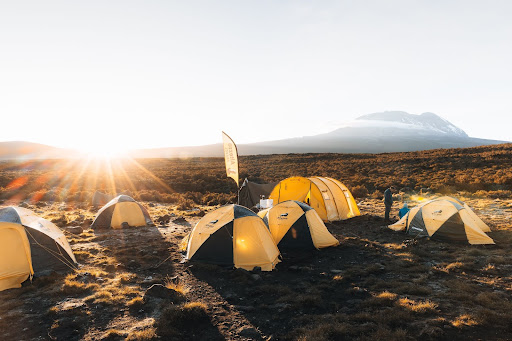Did you know that approximately 30,000 people attempt to reach the summit of Mt. Kilimanjaro each year? That’s about 82 adventurers per day! The success rate varies and is highly dependent on the number of days allocated for the climb. Climbs that last 7 days or more have a notably higher success rate of around 93%.
Choosing the right operator and the perfect route can make a world of difference in your Kilimanjaro experience.
Overwhelming Choices? Not Anymore
Navigating through more than 300 companies operating on Kilimanjaro can seem like an insurmountable task. However, by taking into account some essential factors, you can narrow down your options and make a well-informed choice.
Fair Treatment – The Essential Role of KPAP
The first step in choosing an operator should be visiting the KPAP (Kilimanjaro Porters Assistance Project) website. This organization plays a pivotal role in ensuring companies treat their porters ethically and fairly. The harsh reality on Kilimanjaro is that, due to challenging and sometimes unsafe working conditions, porters may tragically lose their lives.
Choosing a KPAP member company means you’re ensuring the operator pays a good salary, provides nutritious food, good equipment, and necessary medical treatment to their porters. While these may seem like basic provisions, unfortunately, about 80% of companies do not adhere to these practices.
Trust Built on Reviews – TrustPilot and TripAdvisor
Once you’ve shortlisted KPAP member companies, delve into review platforms like TrustPilot and TripAdvisor. Look for companies with at least 10 years of operation and more than 1000+ reviews. This adds a layer of trust and minimizes risk since these operators have stood the test of time and served numerous clients.
Transparency is Key – No Hidden Costs
Next, thoroughly examine the operator’s website. Look for complete transparency in their pricing structure to avoid any hidden costs that might surprise you later. Some operators may initially appear more affordable, but they could charge additional fees for transport, accommodation, etc., making the overall cost of your expedition much higher.
Selecting the Route – Valuable Insights from Marvin Derichs
After you’re done with this extensive research, it’s time to select your climbing route. Here, we sought the expert advice of Marvin Derichs from Altezza Travel for insights.
During our interview with Marvin, he provided two critical tips:
- Opt for an expedition that lasts 7 days or longer, as this gives your body the required time to acclimatize to the high altitude.
- We recommend the Lemosho route. It’s less crowded than the Marangu route and provides the most stunning views among all routes on Mt. Kilimanjaro. The Lemosho hike even offers a chance to summit Cathedral Peak, the highest point of the Shira volcano, which aids in acclimatization.
Equipped with this detailed information, you’re now ready to make a well-informed decision and gear up for an unforgettable adventure!

